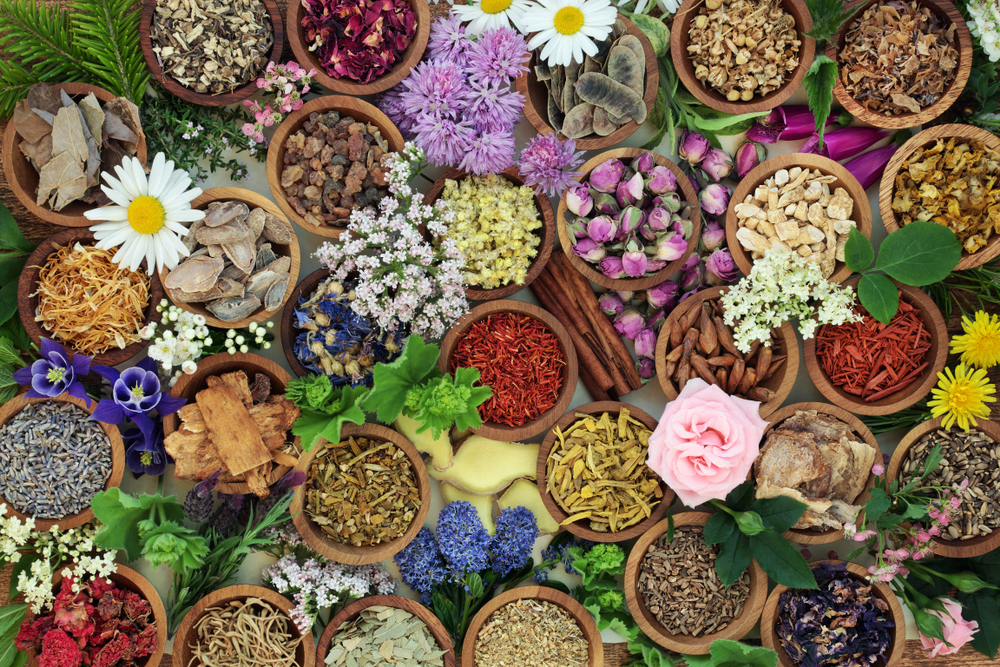For over a thousand years, monks living in remote monasteries have consistently outlived their contemporaries by decades, and their secret wasn’t just prayer and meditation. Hidden within monastery walls were carefully guarded botanical formulas using rare herbs that most people have never heard of, plants that could slow aging, boost vitality, and extend lifespan in ways that modern science is only beginning to understand.
These weren’t the common herbs you find in your local health food store, but obscure plants that grew wild in mountain regions or were cultivated in secret monastery gardens. The monks developed sophisticated knowledge about which plants could enhance longevity, often through centuries of careful observation and documentation that was passed down through generations of religious communities.
What makes these monastic herbal traditions so fascinating is how they focused specifically on plants that supported not just immediate health, but long-term vitality and graceful aging. While the outside world was dealing with plague, malnutrition, and early death, monks were quietly perfecting botanical anti-aging protocols that kept them sharp, energetic, and healthy well into their eighties and nineties.
Why monastery life became the ultimate longevity experiment
Monastic communities provided the perfect environment for discovering longevity herbs because monks lived in controlled, stable environments where they could observe the long-term effects of different plants over decades. Unlike the outside world where people moved frequently and lived chaotic lives, monasteries provided consistent living conditions that made it possible to identify which herbs truly supported longevity.
The contemplative lifestyle of monks meant they paid careful attention to subtle changes in their physical and mental state, making them ideal observers of how different herbs affected their bodies over time. They noticed which plants helped maintain mental clarity with age, which ones supported physical endurance, and which combinations seemed to slow the aging process.
Monasteries also had the resources and stability to maintain herb gardens and libraries where knowledge could be accumulated and preserved across generations. Monks could experiment with rare plants, document their effects, and refine their understanding over centuries rather than losing knowledge with each generation.
The absence of many modern lifestyle stressors in monastic communities meant that the effects of longevity herbs could be observed more clearly, without the interference of alcohol, processed foods, chronic stress, or environmental toxins that might mask or complicate the herbs’ benefits.
The forgotten adaptogen that monks called the immortality root
Gynostemma pentaphyllum, known to Tibetan monks as “xiancao” or immortality grass, contains unique compounds called gypenosides that support cellular regeneration and protect against age-related decline. This climbing vine grows in remote mountain regions and was so prized by monks that they often risked dangerous journeys to harvest it from wild populations.
The herb’s remarkable longevity effects come from its ability to activate sirtuins, the same cellular pathways that are stimulated by caloric restriction and are associated with extended lifespan in numerous species. Monks discovered that regular consumption of gynostemma could provide many of the anti-aging benefits of fasting without the need for extreme dietary restrictions.
Unlike other adaptogens that primarily help the body handle stress, gynostemma specifically targets the cellular mechanisms of aging, helping to maintain telomere length, improve mitochondrial function, and reduce the accumulation of cellular damage that drives the aging process.
The monks prepared gynostemma as a daily tea that they consumed throughout their lives, often starting in their twenties and continuing until death. Historical records from some monasteries suggest that monks who regularly consumed this herb lived an average of 15-20 years longer than those who didn’t have access to it.
The memory herb that kept aging monks mentally sharp
Bacopa monnieri, cultivated in monastery ponds and streams, was used by Buddhist monks to maintain mental clarity and memory function well into advanced age. This aquatic herb contains bacosides, compounds that specifically protect brain cells from age-related damage while enhancing cognitive function.
The monks discovered that bacopa worked differently from stimulating herbs, providing sustained mental clarity without the peaks and crashes associated with caffeine or other brain-stimulating compounds. Regular use seemed to actually improve cognitive function over time rather than just providing temporary mental enhancement.
Monastery records describe monks in their eighties and nineties who could still recite complex texts from memory and engage in sophisticated philosophical discussions, abilities that the monks attributed to their daily consumption of bacopa preparations. The herb seemed to prevent the memory decline that was considered inevitable with aging.
The preparation methods used by monks involved carefully timing the harvest of bacopa to maximize its active compounds, followed by specific drying and extraction processes that concentrated its brain-protective properties. These traditional preparation methods often produced more potent results than modern standardized extracts.
The circulation enhancer that kept monks active into old age
Gotu kola, grown in the shaded areas of monastery gardens, was prized by monks for its ability to maintain physical vitality and prevent the circulation problems that typically limited mobility in aging populations. This low-growing herb contains triterpenoids that strengthen blood vessels and improve circulation throughout the body.
The monks observed that regular consumption of gotu kola helped prevent the joint stiffness, poor circulation, and physical decline that typically accompanied aging. Elderly monks who used this herb regularly could continue performing physical labor and maintaining active lifestyles well beyond the typical age when such activities became difficult.
The herb’s effects on circulation were particularly important in cold mountain monasteries where poor blood flow could become a serious health issue during winter months. Monks found that gotu kola not only prevented circulation problems but actually seemed to improve vascular health over time.
Traditional monastery preparations of gotu kola involved combining fresh leaves with other synergistic herbs to create tonics that supported overall circulation and vitality. These multi-herb formulas often produced more comprehensive benefits than using gotu kola alone.
The stress-resilience herb that protected monks from aging damage
Rhodiola rosea, harvested from high-altitude regions near monasteries, was used by monks to build resilience against the physical and mental stresses that accelerate aging. This hardy plant contains rosavins and salidroside, compounds that help the body maintain optimal function under challenging conditions.
The monks understood that chronic stress was one of the primary drivers of premature aging, and they used rhodiola specifically to help their bodies maintain equilibrium despite the physical demands of monastic life and the mental challenges of intensive spiritual practice.
Unlike herbs that simply mask stress symptoms, rhodiola seemed to actually improve the body’s fundamental stress response systems, making monks more resilient to all types of stressors over time. This improved stress resilience translated into better overall health and slower aging processes.
The timing of rhodiola consumption was carefully considered by monks, who found that taking it during certain seasons or life phases provided maximum anti-aging benefits. They developed sophisticated protocols for using this herb that maximized its longevity-promoting effects.
The digestive longevity herb that monks guarded jealously
Terminalia chebula, known as the “king of medicines” in some monastic traditions, was used to maintain digestive health and prevent the gastrointestinal problems that often shortened lifespan in aging populations. This fruit contains unique tannins and other compounds that support digestive function while providing systemic anti-aging effects.
The monks recognized that digestive health was fundamental to longevity, understanding that poor digestion led to malnutrition, inflammation, and accelerated aging even when adequate food was available. Terminalia chebula specifically addressed these issues while providing additional longevity benefits.
The herb’s effects extended beyond digestion to include liver support, immune system enhancement, and cellular protection that contributed to overall longevity. Monks who used this herb regularly seemed to maintain better overall health and vitality throughout their lives.
Traditional preparation methods involved aging the fruits under specific conditions to concentrate their active compounds, creating preparations that were significantly more potent than fresh or simply dried versions of the herb.
The sleep and longevity connection that monks mastered
Jatamansi, a rare herb found only in high-altitude regions, was used by monks to optimize sleep quality and duration, recognizing that restorative sleep was essential for longevity. This aromatic root contains compounds that promote deep, restful sleep while supporting the cellular repair processes that occur during rest.
The monks understood that poor sleep quality accelerated aging by interfering with growth hormone production, cellular repair, and immune function. Jatamansi specifically addressed these issues by improving both sleep quality and the regenerative processes that occur during sleep.
Unlike sedating herbs that simply induced drowsiness, jatamansi seemed to enhance the natural sleep cycles and promote the deep sleep stages that are most important for longevity and anti-aging. Monks who used this herb regularly reported feeling more rested and maintaining better energy levels throughout their lives.
The herb’s effects on sleep were complemented by its ability to reduce anxiety and mental restlessness, creating the calm mental state that monks found essential for both spiritual practice and physical longevity.
The cellular protection herb that prevented age-related disease
Cordyceps sinensis, cultivated in monastery high-altitude gardens or harvested from wild populations, was used by monks to maintain cellular energy and prevent the mitochondrial decline associated with aging. This unique fungus contains compounds that specifically support cellular energy production and protect against age-related cellular damage.
The monks observed that regular consumption of cordyceps helped maintain physical energy and endurance well into advanced age, preventing the fatigue and weakness that typically accompanied aging. The herb seemed to support the cellular powerhouses that fuel all bodily functions.
The longevity effects of cordyceps extended beyond energy to include immune system support, respiratory function enhancement, and protection against various age-related diseases. Monks who used this herb regularly seemed to maintain better overall health and resist common ailments that affected aging populations.
Traditional preparation methods involved specific cultivation and processing techniques that maximized the herb’s active compounds, creating preparations that were often more effective than wild-harvested or commercially produced versions.
The modern rediscovery of monastic longevity wisdom
Contemporary longevity scientists are now validating many of the herbal choices made by monks centuries ago, finding that these plants contain compounds that target the fundamental mechanisms of aging. The monks’ empirical observations are being confirmed by modern molecular biology and aging research.
The holistic approach used by monks, who combined multiple longevity herbs rather than relying on single compounds, is now recognized as more effective than isolated herb use. The synergistic effects of traditional monastic formulas often produce better results than individual herbs used alone.
The lifestyle context in which monks used these herbs, including regular meditation, physical activity, and stress management, likely amplified their longevity effects. Modern users may need to consider these lifestyle factors to achieve similar benefits from monastic longevity herbs.
The quality and preparation methods used by monks were often superior to modern commercial herb processing, suggesting that traditional preparation techniques may be essential for maximizing the longevity benefits of these plants.
The accessibility challenge of monastic longevity herbs
Many of the herbs used by monks for longevity are still rare and difficult to obtain, growing only in specific geographical regions or requiring specialized cultivation techniques. This scarcity has preserved their potency but limited their availability to modern users seeking longevity benefits.
The traditional knowledge about proper preparation and use of these herbs is often as important as the herbs themselves, and much of this information has been lost or remains closely guarded within specific monastic communities. Learning to use these herbs effectively requires understanding their traditional applications.
Quality control becomes crucial when working with rare longevity herbs, as the commercial market often provides inferior or adulterated versions that lack the potency of traditionally prepared monastery herbs. Sourcing authentic, high-quality versions of these plants requires careful research and often significant expense.
The legal status and import restrictions on some monastic longevity herbs can make them difficult to obtain in certain regions, despite their historical use and potential benefits for healthy aging.
Your monastery garden for modern longevity
While some monastic longevity herbs remain rare and difficult to obtain, others can be cultivated in home gardens or sourced from reputable suppliers who understand traditional preparation methods. Starting with the more accessible herbs can provide significant longevity benefits while you learn about traditional monastic approaches to herbal longevity.
The key to using monastic longevity herbs effectively lies in understanding their traditional applications, proper preparation methods, and the lifestyle context that maximizes their benefits. Simply taking commercial supplements may not provide the same results that monks achieved with their carefully prepared traditional formulas.
Combining multiple longevity herbs in the synergistic combinations used by monks often produces better results than using individual herbs alone. The monastic approach to longevity was holistic, recognizing that true longevity required supporting multiple body systems simultaneously.
The wisdom of monastic longevity traditions offers valuable insights for modern anti-aging approaches, providing time-tested strategies for extending both lifespan and healthspan through the careful use of rare and powerful plants that have supported human longevity for over a millennium.


















